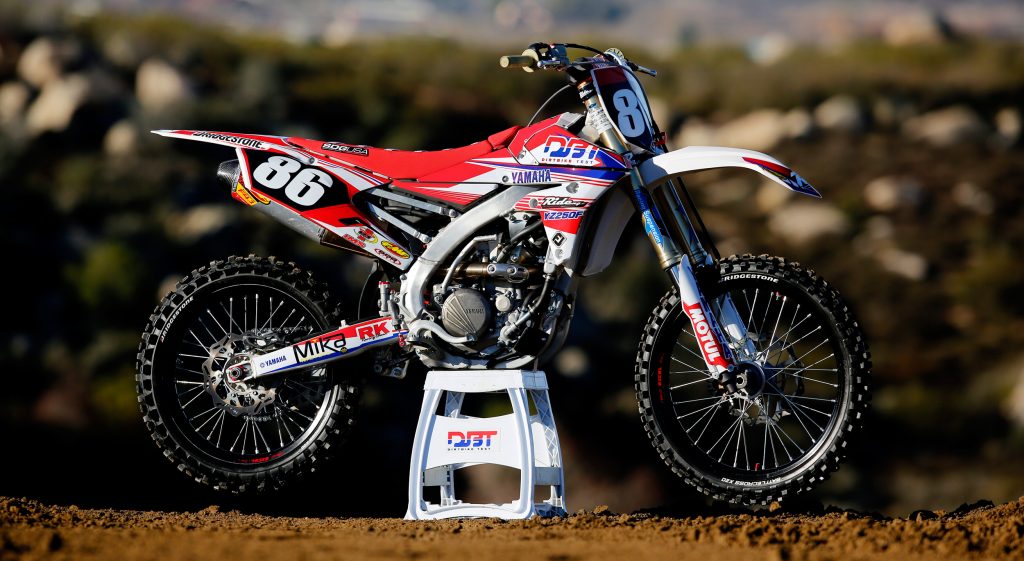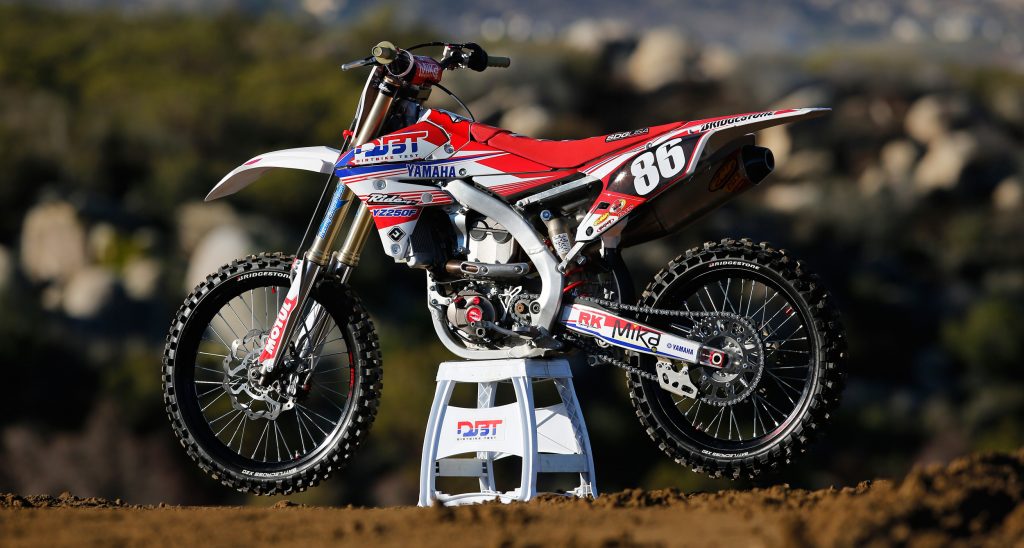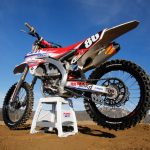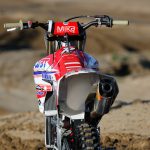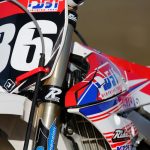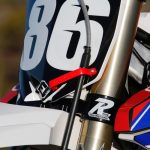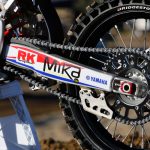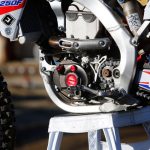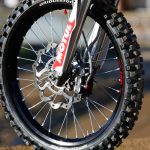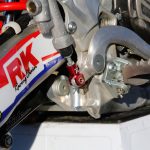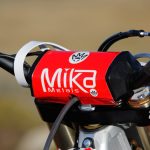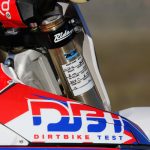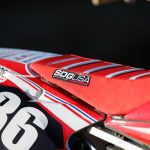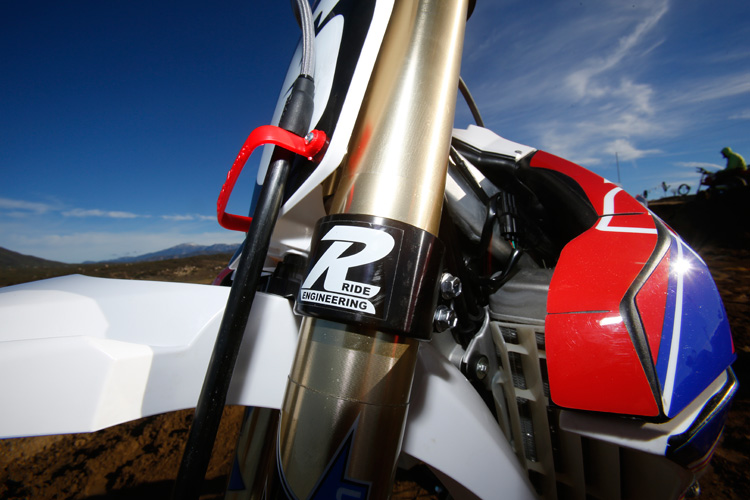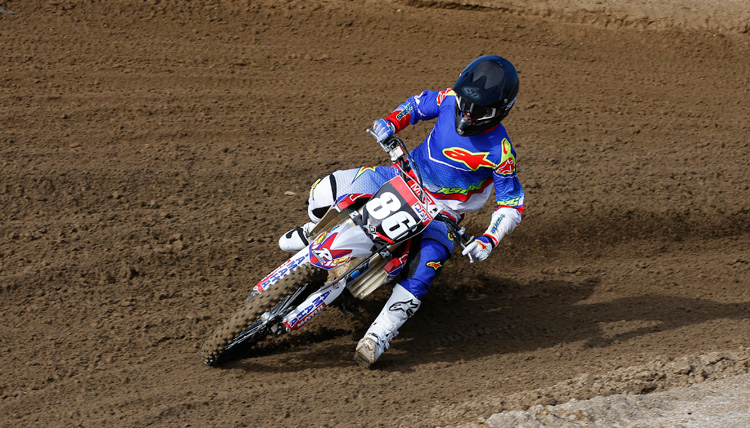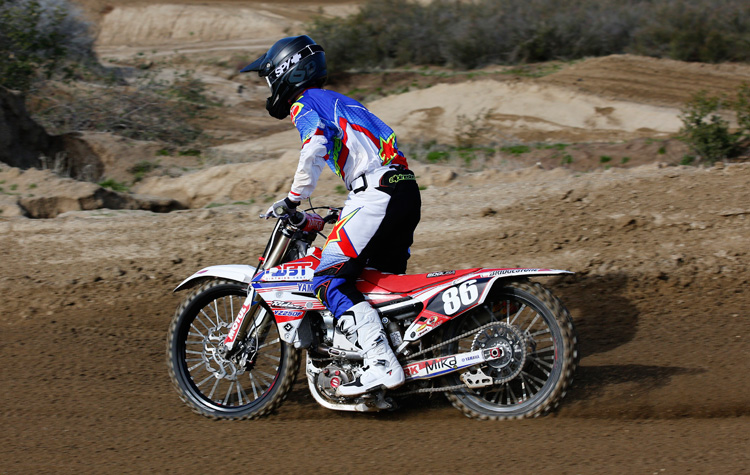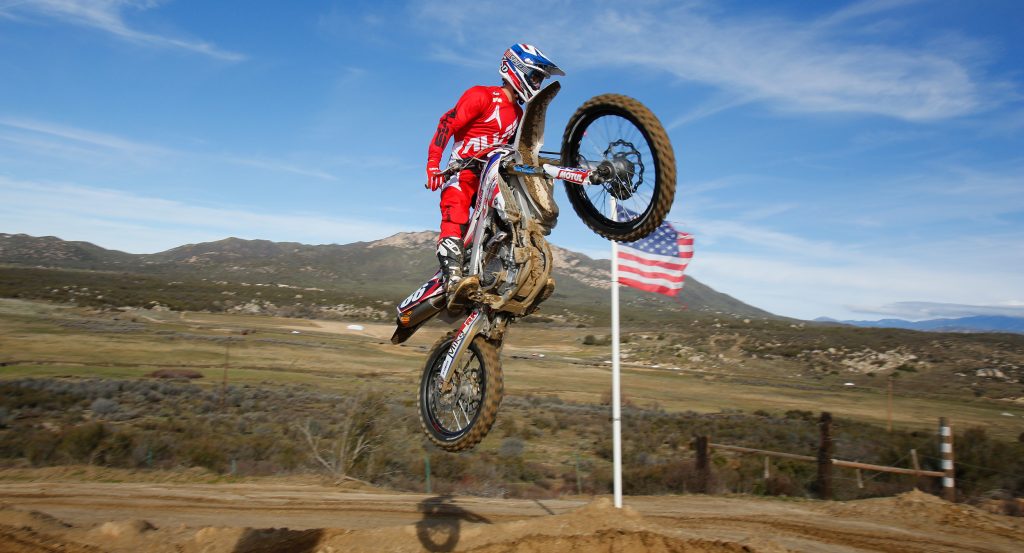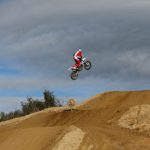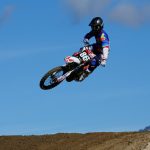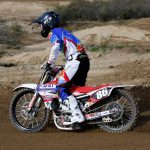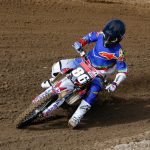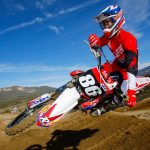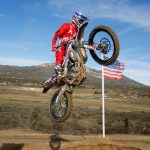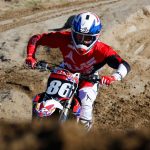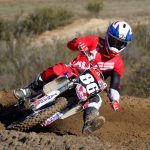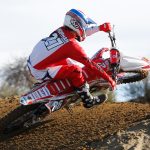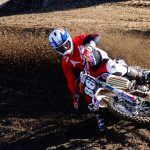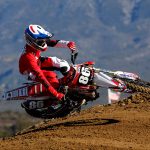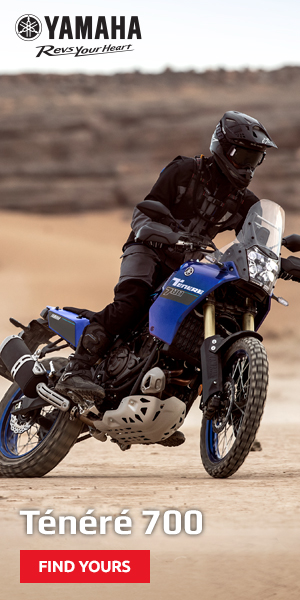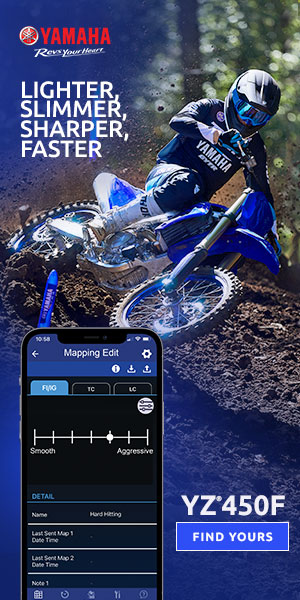Project DBT: Ride Engineering, FMF, 707 Suspension, Flu Designs 2017 Yamaha YZ250F
Photos: Scott Hoffman
The YZ250F has been the big dog in the class for the past few years but the competition has caught up. Even though the 2017 YZ250F had also seen some improvements it’s still not the shootout winner for some. Following our first impression and full test, it was time to make some further improvements to the already proven quarter-liter racer. There was a time when 250cc motocrossers were the go-to displacement, especially before valve pushers killed two-stroke motocross bikes. The YZ250F pretty much shares the same chassis as the 450F and the Yamaha is one of the 250Fs that can have a wide appeal to riders of all ages and sizes. The Yamaha 250F is one of the roomiest 250Fs in the field and is a great option for a rider that desires the lighter feeling of a 250F and doesn’t want a ride a fire-breathing 450.
In this journalist’s opinion, the only reason I lean more toward a 450F for my personal bike is long-term maintenance and the extended rebuild intervals of a 450 compared to a 250F. However, we have proven in the past that the Yamaha 250F is a pretty solid beast and can endure up to 100 hours if maintained properly and the rider isn’t banging the engine off the rev limiter all over the track every time they ride. I really like the feel and how much fun a 250F can be—maybe not for racing, but for track days I have a blast riding a 250F that is setup for a heavier rider compared to stock.
THE BUILD:
Ride Engineering took the helm on this project with input and desires from the DBT crew. We wanted to make improvements to the YZ to appeal to a wide variety of riders without sacrificing reliability. No mods were made to the engine to keep it running for the distance other than the addition of an FMF 4.1 Stainless/Aluminum full exhaust. This unit is more cost-effective over a full titanium unit but with the same performance gains, and still saved us just over one pound compared to stock. Most of our mods were in the chassis to help improve the feel so the suspension was set up for a rider 170-185 pounds.
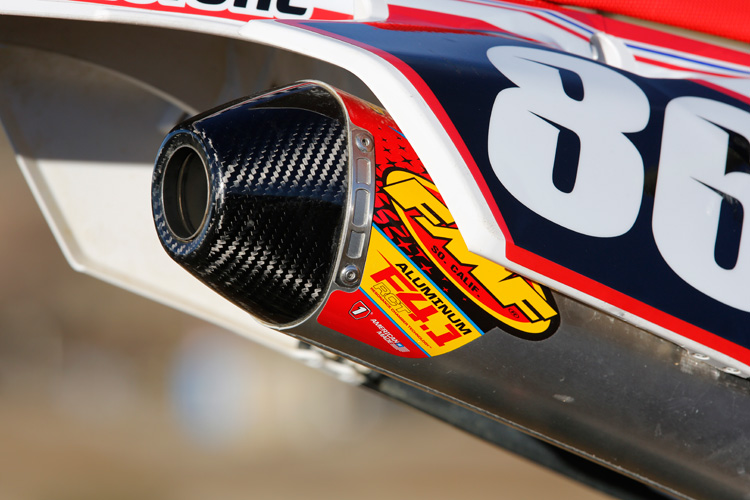
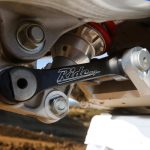 Ride Engineering went to town to improve the bike’s steering and balance by decreasing the fork offset to 20mm with clamps and running a performance link in the rear (which also lowered the rear by 5.5mm. They also utilized a Honda CRF/Showa-style steering stabilizer up front with a special Ride bracket to improve the feel in ruts and long turns. The brakes on the Yamaha are also one of the YZ’s weak links and Ride offers a full billet brake caliper and solid wave rotor to bring the YZ up to the times. The system uses a CRF-style 11mm master cylinder and a Ride Engineering steel braided brake line. The brake offers more overall braking power and is more progressive over stock. They also swapped out the rear brake line to a Ride steel braided line for a more accurate feel and less overall pedal travel before engagement.
Ride Engineering went to town to improve the bike’s steering and balance by decreasing the fork offset to 20mm with clamps and running a performance link in the rear (which also lowered the rear by 5.5mm. They also utilized a Honda CRF/Showa-style steering stabilizer up front with a special Ride bracket to improve the feel in ruts and long turns. The brakes on the Yamaha are also one of the YZ’s weak links and Ride offers a full billet brake caliper and solid wave rotor to bring the YZ up to the times. The system uses a CRF-style 11mm master cylinder and a Ride Engineering steel braided brake line. The brake offers more overall braking power and is more progressive over stock. They also swapped out the rear brake line to a Ride steel braided line for a more accurate feel and less overall pedal travel before engagement.
To help improve the ergonomics and feel, Ride Engineering offers a rubber-mounted anti-twist bar mount and we opted for the softer rubber inserts for our old, bad wrists. The stock bar was swapped out for a Mika bar. Mika supplied the rear sprocket, yet stock gearing was still retained. For durability we paired the Mika sprocket with an RK chain. The stock chain was on its last leg and RKs have always proved to be a solid and long-lasting link system. For more seat grip, an SDG seat cover was mounted up. The cover had more grip but not too much like some of the ribbed covers we have tried in the past. Overly grippy seat covers tend to pull my pants down and restrict easy movement on the bike. The stock foot pegs were also replaced with IMS Core MX pegs for an improved bite under your dogs.
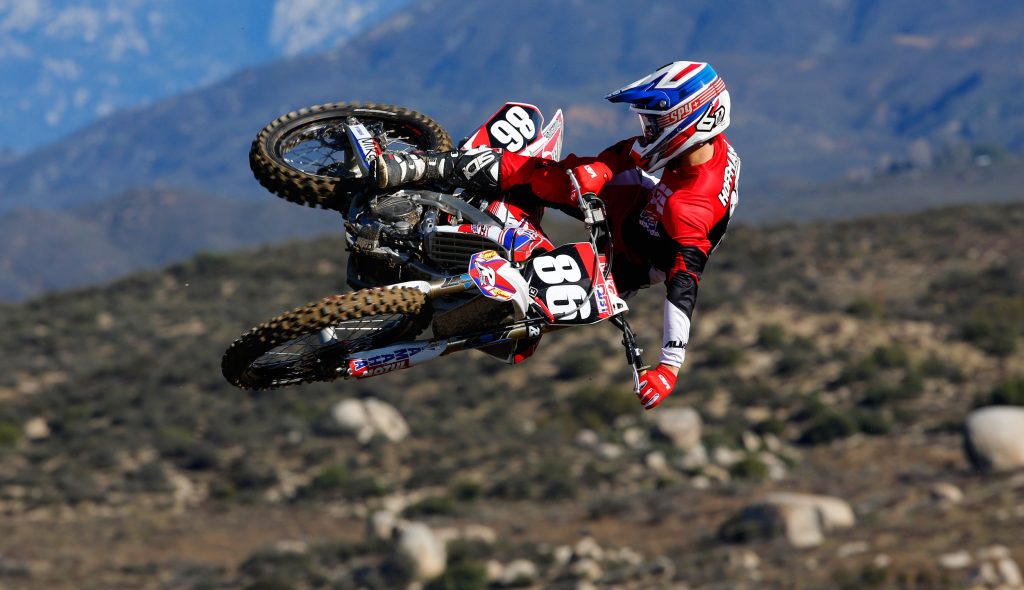
With all of the Ride Engineering handling changes, and because we wanted a 250F that fit a broader scope of riders including vet and those over 175 pounds, the fork and shock were sent to 707 Suspension to be freshened up and revalved for our category of rider. 707 rebuilt the units with new seals and low-friction bushings up front and did a revalve to help keep the bike riding higher in the stroke for our heavier riders. Their original settings came back with the fork oil height 5mm lower than stock and the springs were stock.
To keep up with the Joneses and to give our project that visual appeal, Ride added the bling and some workable parts like axle blocks that have easy-to-read markings for adjustment, wheel spacers that resist falling out during wheel swaps, and an assortment of red anodized red caps, covers and a rear brake clevis. To totally change the look of the stocker, Flu Designs printed up a pretty sick set of graphics to complement the entire project in DBT colors.
Since no bike is done without a new set of tires, Ride chose the Bridgestone Battlecross soft terrain X20s due to the soft winter conditions in SoCal (yes we had some rain this year). The Bridgestones performed very well in loose/softer conditions but some riders were not a big fan of the front tire as the track started to dry out. Over time we got used to the front tire even though it pushed in hard/firm conditions. The rear tire worked well in a variety of conditions, even after it showed some wear. And finally, to keep our YZ breathing clean air, we installed a DT1 filter.
TESTED:
For our test we had a gaggle of different riders mount our stead from 170-pound young pros to 200-pound crotchety vets. And despite the differences, the results were very similar in the end.
During our first photo shoot and test at Cahuilla Creek, our pro liked the overall improvements to the YZ. The Ride clamps and rear link does help improve the balance and accuracy of the handling in both slow and fast turns yet the suspension needed to be further dialed in. Even our lighter pro, who was way faster than our young novice and older vet riders, felt the suspension rode too low in the stroke and caused the bike to feel stiff in some conditions and under hard braking entering corners. Going in on the compression front and rear and a 1/8 turn in on the high speed in the shock helped, yet the sensation was still there. The suspension did not hold our rider back from ripping laps, it was more of a comment and settings just needed to be further dialed in. The fork and shock were balanced and the suspension did not have bottoming issues.
As far as power, the FMF exhaust did free up the YZ engine but we knew there was more there when we had a Yamaha handheld tuner handy (that was day two of testing). Gearing seemed to work well at the faster Cahuilla track and even the fourth-gear pinned triple step-up was not an issue. As the track got rougher during the day, we dialed in the steering stabilizer and it helped keep the front tracking in bumpy, rutted corners. It only helps straight-line stability slightly since most of the dampening is when the wheel is turned in then back to center, yet we could feel the difference.
As our testing continued on tracks like Perris and Milestone in Southern California, suspension settings were still a minor issue for some riders on the tighter jump-filled tracks. We ended up raising the oil height 10cc per leg. Remember, this is the SSS spring fork so raising the oil will stiffen up the air-spring effect toward the lower part of the stroke. Maybe one spring rate higher for our heavier riders would have been optimal, but the fork oil height change did the trick. In the rear we ended up swapping out the stock spring for a 5.8N-m spring, which happened to be off a 2015 YZ450F, this is what we had handy, the stock spring is a 5.4N-m.
With these changes we went back to the standard clicker settings starting at 10 out and even went back to the recommended 707 high-speed settings. These minor setup changes really brought more life into our project bike. The fork was more plush in smaller bumps and chop, and the overall action was improved. Entering corners now allowed the bike to settle better since the front did not dive down as deep with the higher oil height. This really helped us further appreciate the clamp and link changes as the handling and suspension complemented each other now. We did slow down the rebound on both ends to cap off the final settings.
We sent riders that rode the YZ from the day before on the same track and we did not tell them what we did to the bike. One rider couldn’t believe how settings alone could make such a difference. The project YZ250F was now just more planted everywhere and less busy and the slight twitch we had early on down straights vanished. This is why testing, even after you have your suspension done, is so important. Every rider is different so everyone likes something different, even if it’s only 10cc of oil per leg and a stiffer shock spring. Toward the end of our testing we swapped out the front tire that was more conducive to the firmer track conditions and some riders liked the changes.
As for the performance with the FMF exhaust, we ended up advancing the ignition timing from the mid to top and taking a little bit of fuel away in the mid. These changes retained the torquey bottom end but ramped up the power from the mid to the top but still held a decent overrev. If we took away fuel and advanced the ignition down low, it ran through the power curve way too fast and caused the rider to shift too much. Yes it felt like it made more power but it just made it too fast and revved right through. The FMF exhaust helped the overall power delivery and the Yamaha tuner dialed in the delivery to our rider preferences.
Overall the project was a success. Once we spent a few days dialing in the settings on the suspension as well as the fuel injection and ignition with the FMF exhaust, everyone was waiting to get a chance to ride the bike, especially since it wasn’t theirs and they didn’t have to wash it. The only real downfall to making improvements and dialing in a bike for a certain sector of rider is, it’s not free. But once you are done you can appreciate the changes to the performance, handling, and even the look. It’s often worth the effort, especially if you plan on riding your mount for several seasons. The small changes really start to add up as the project progressed—first it was the handling and turning, then suspension. From there, brakes improved and the engine only really needed an exhaust and ECU remapping for most rider. Now we had a bike that worked and looked better than stock—for us! Ride Engineering really helped DBT dial in the 2017 Yamaha YZ250F for our specific needs. And it goes to show how broad an audience a 250F can be if you make some subtle changes. We had fast pros to novices to over 200-pound vets and they were all able to find a setting they ended up liking on the project YZ250F.
ORIGINAL 2017 DBT TESTING
2017 YZ250F First Impression LINK:
2017 YZ250F Full Test LINK:
THE LIST
Ride Engineering 20mm Offset Triple Clamps ($549.90)
Ride Engineering One-Piece Bar Mount ($104.95)
Ride Engineering Soft Poly Cone Kit ($24.95)
Ride Engineering Billet Brake Caliper ($399.95)
Ride Engineering 270mm Wave Rotor ($175.00)
Ride Engineering Braided Steel Front Brake Line ($69.95)
Ride Engineering Rear Braided Steel Brake Line ($57.95)
Ride Engineering Front Brake Line Mount ($34.95)
Ride Engineering Performance Rear Link ($219.95)
Ride Engineering YZ Steering Damper Bracket ($59.95)
Ride Engineering/Showa 24mm Steering Damper ($300.00)
Ride Engineering Engine Plugs ($47.95)
Ride Engineering Oil Cap ($21.95)
Ride Engineering Axle Blocks ($47.95)
Ride Engineering Brake Clevis ($44.95)
Ride Engineering Kill Button ($49.95)
Ride Engineering Front & Rear Wheel Spacers ($31.95/pair)
Ride Engineering Front Mast Cyl Cover ($27.95) Rear Cover ($24.95)
Ride Engineering Valve Cap & Rim Lock Spacer Kit ($27.95)
Ride Engineering Hour Meter w/Bracket ($34.95)
FMF Racing Factory 4.1 Stainless/Aluminum Complete System ($799.99)
707 Racing Suspension Revalve and Rebuild ($400.00) plus parts
Flu Designs Graphic Kit (from $165.00)
Bridgestone Battlecross X20 (see dealer)
RK 520 MXZ4 ($80.00-$100.00)
SDG Seat Cover ($65.99)
DT1 Air Filter ($29.95)
Mika Raw Series Handlebar ($109.99)
Mika Rear Sprocket ($69.95)
Motul RBF600 Dot4 Brake Fluid (see dealer)
Motul 300V Factory Line Oil 5w40 (see dealer)
IMS Core Foot Pegs ($159)
CONTACT INFORMATION
Yamaha Motor Corp: www.yamaha-motor.com
Ride Engineering: www.ride-engineering.com, 949-722-8354
FMF Racing: www.fmfracing.com, 310-631-4363
707 Suspension: www.707suspension.com, 707-623-9785
Flu Designs: www.fludesigns.com, 888-519-2313
Bridgestone: www.motorcycle-karttires.com, 877-668-6872
SDG: www.sdg-innovations.com, 949-752-5227
DT1 Air Filters: www.dt1filters.com, 805-777-7601
Motul USA: www.motul.com, 888-676-8853
RK Chain: www.rkexcelamerica.com, 760-732-3161
Mika Metals: www.mikametals.com
IMS: www.imsproducts.com, 800-237-9906
More Images:
Support DBT by shopping through the links below:
